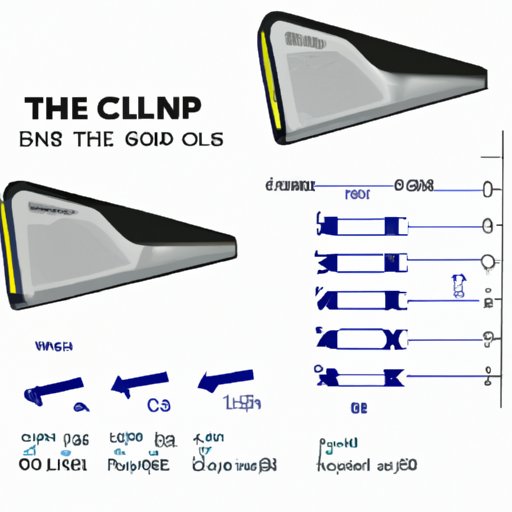Introduction
Golf wedges are an essential piece of equipment in any golfer’s bag. Different types of wedges are available that can help you play a range of shots around the green and from the fairway. It is important to understand the different types of wedges and how they can benefit your game. In this article, we will explore what golf wedges are, the types of wedges available, and tips on how to choose the right wedge for your game.

Definition of a Golf Wedge
A golf wedge is a type of club with a higher loft angle than other clubs. The loft angle is the angle between the face of the club and its vertical axis. Wedges are designed to generate more backspin on the ball, allowing it to stop quickly once it lands. Wedges come in various shapes and sizes to suit different playing styles and courses.
Overview of Types, Benefits, and Tips for Use
The four main types of wedges are pitching wedges (PW), gap wedges (GW), sand wedges (SW), and lob wedges (LW). Each type of wedge has a unique purpose and helps players gain more control over their shots. Wedges can help golfers increase their distance control and spin rates, as well as providing versatility in shots. When choosing the right wedge for your game, it is important to consider factors such as loft and lie angles, bounce angle, weight, and shaft length.
How to Choose the Right Wedge for Your Game
When selecting a wedge, it is important to take into account the loft and lie angles. Loft is the angle between the face of the club and the ground when the club is resting on its sole. The lie angle is the angle between the shaft and the ground when the club is at address. Ideally, the loft and lie angles should be tailored to your swing to ensure maximum performance.
Bounce angle is another factor to consider when choosing a wedge. Bounce angle refers to the angle between the sole of the club and the ground. A higher bounce angle will help you hit shots out of soft conditions, while a lower bounce angle is better suited for firm conditions. It is important to select a wedge with the right bounce angle to suit your playing style and course conditions.
Weight and shaft length are also important considerations when selecting a wedge. Heavier wedges tend to be more forgiving, while lighter wedges offer more control. Shaft length should also be chosen based on your height and swing speed. Longer shafts tend to provide more power and accuracy, while shorter shafts can help you gain better control over your shots.

The Benefits of Owning Different Wedges
Owning different types of wedges can have many benefits for your game. Having a full set of wedges gives you the versatility to hit a range of shots around the green or from the fairway. Different wedges can also help you improve your distance control and spin rates. With the right combination of wedges, you can become a much more consistent and accurate player.

Exploring the Different Types of Wedges and Their Uses
Pitching wedges are the most common type of wedge and are typically used for full shots from the fairway. They have a loft angle of 45-50 degrees, making them ideal for shots between 100-120 yards. Gap wedges are designed for shots between 80-100 yards and have a loft angle of 52-54 degrees. Sand wedges are designed for shots out of bunkers and have a loft angle of 56-58 degrees. Lob wedges are the highest lofted wedges and are typically used for shots within 50 yards of the green. They have a loft angle of 60-64 degrees.
A Beginner’s Guide to Choosing the Right Wedge for Your Swing
If you are new to golf and are looking for the right wedge for your game, here is a beginner’s guide to help you get started. First, it is important to understand your swing and the distances you typically hit with each club. Next, evaluate your current wedge set to determine which clubs are working for you and which ones need to be replaced. Research different wedge options and compare them to find the best fit for your game. Finally, buy the appropriate wedges and practice with them before taking them to the course.
Conclusion
Golf wedges are a key piece of equipment in any golfer’s bag. Different types of wedges are available that can help you play a range of shots around the green and from the fairway. It is important to understand the different types of wedges and how they can benefit your game. Considerations for loft and lie angles, bounce angle, weight, and shaft length should all be taken into account when selecting the right wedge for your game. With the right combination of wedges, you can become a much more consistent and accurate player.


